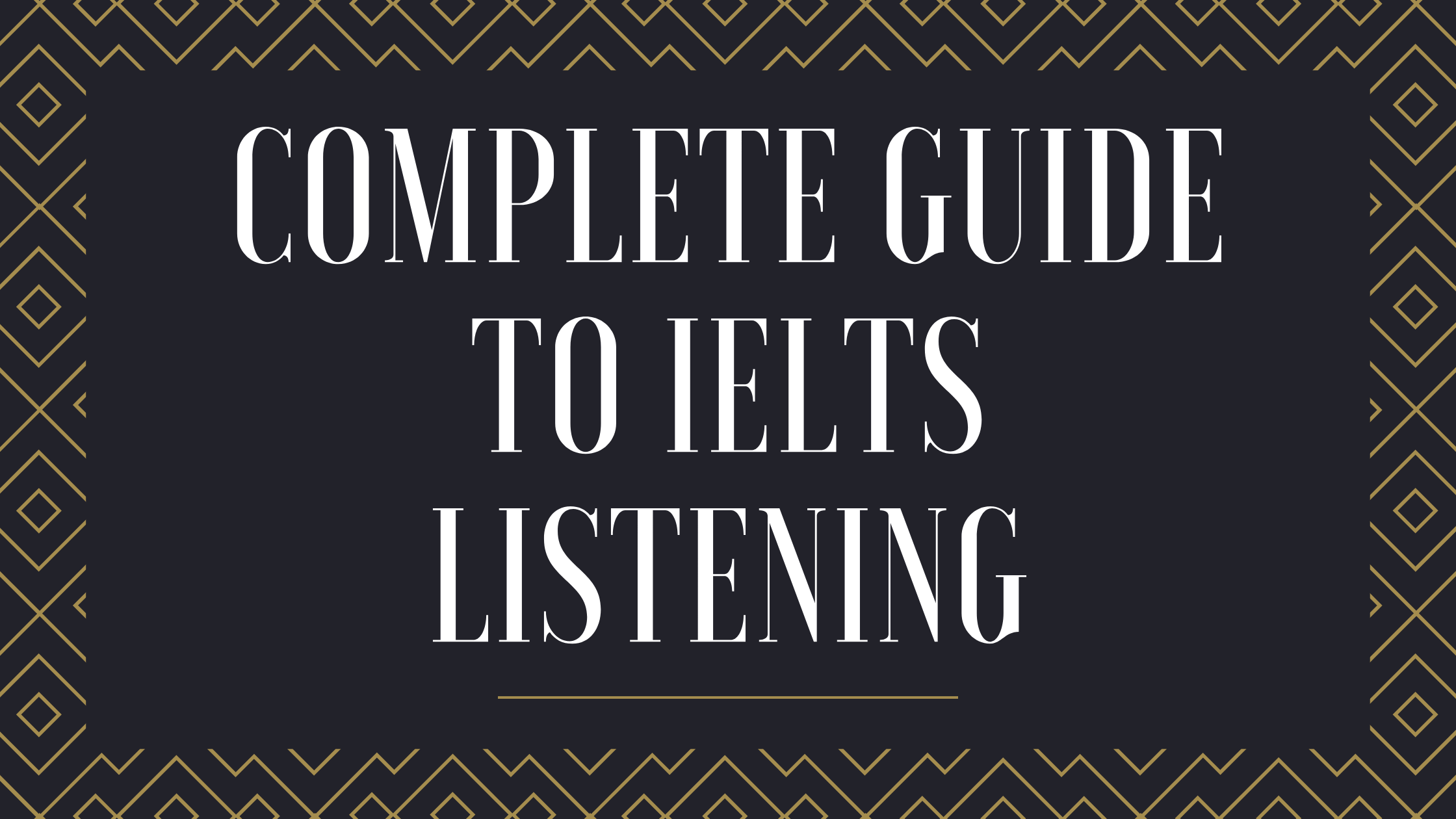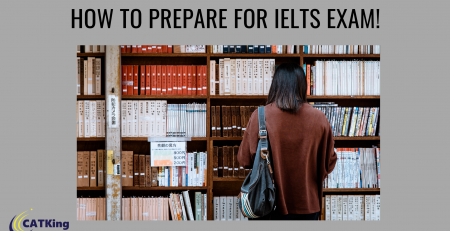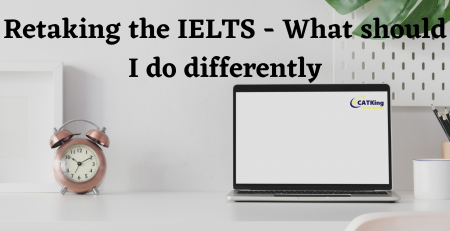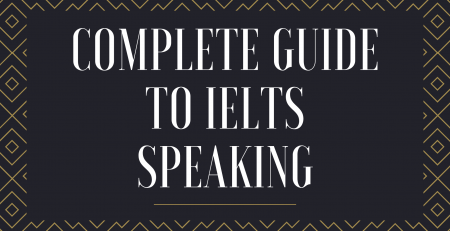Complete Guide to IELTS Listening
Complete Guide to IELTS Listening
The IELTS listening exam causes many students problems. If you’ve taken the IELTS exam or completed some IELTS Listening practice questions already and you’ve struggled, this is very normal. The test is challenging for a variety of reasons:
- You only hear each recording only one time.
- The Listening passages get more difficult as you progress through the exam.
- There are a variety of question types with which you must be familiar.
- You must stay focused in order to answer questions well.
- You must also develop your skills at predicting answers by analyzing the questions.
- There is a range of English accents represented on the exam.
This Guide to IELTS Listening will address all of these issues and provide you with the key strategies you need to improve your Listening scores. It should go without saying that the more English you know, and the better you understand native English speakers, the easier IELTS Listening will be for you. However, most people who take the IELTS need strategies to earn the extra points that will boost their Band scores. Each extra point can really make a difference. Keep reading to learn about the basics of IELTS Listening, the question types on the test, and the IELTS Listening practice that can help you to achieve your IELTS goals.
IELTS Listening: The Basics
Before we get to strategies, let’s take a look at some basic information you should know about the IELTS Listening paper.
General Training vs. Academic
There is no difference between the General Training and Academic IELTS Listening papers. IELTS Reading and Writing are the only sections that differ between the two IELTS exams. Therefore, everything in this post is relevant to Academic and General Training IELTS preparation.
Timing for IELTS Listening
IELTS Listening will take about 40 minutes. Approximately 30 minutes of this time is devoted to actually listening to recordings and attempting to answer questions in your Question Booklet. The Question Booklet is the place where you will see the instructions and the questions you need to answer. The Question Booklet is separate from your Answer Sheet. The Answer Sheet is where you will write your final answers for grading. ONLY the answers you write on your Answer Sheet will be marked. After you listen to the final passage, you will have 10 minutes to transfer answers from your Question Booklet to your Answer Sheet.
You should use this “transfer time” to your advantage. There is no reason to mark final answers on your answer sheet until the 10-minute “transfer time” at the end. Use this time to write carefully and neatly. The grader needs to be able to read what you’ve written! Misspellings are marked incorrect, so you should also use this time to check (and double-check) your spellings.
You will hear four different listening passages on the Listening exam. You will answer 10 questions in each section (40 total). The passages get tougher as you progress through the exam.
Passage 1: This is usually a conversation between two people. Typically, the conversation will involve a basic exchange of information. For example, someone might be placing an order over the phone, or confirming details for a reservation. The topic will be a daily-life situation.
Passage 2: This is usually a monologue (one person speaking). Passage two will also come from a common daily situation. For example, you might hear someone providing directions, or presenting basic information about a place or an event.
Passage 3: The topics become noticeably more challenging in Passage 3. This will be a conversation, often among several people, about an academic topic. You might hear a few students discussing something from class, or a professor providing feedback about an assignment, for example. Passage 3 is tougher because the vocabulary is more difficult, the topics are more complicated, and there are more speakers involved in the discussion.
Passage 4: This will be a lecture from a professor. It could cover any topic from a typical college course. You are not required to have specialized knowledge about the subject matter. However, the language will be difficult and the lecture will be complex. This is the toughest passage on the Listening exam for most students.
Scoring for IELTS Listening
Scoring is fairly straightforward for the Listening paper. Each question is worth 1 point, so you can achieve a “raw” score up to 40 points. From there, IELTS converts your “raw” score into your Band Score. However, keep in mind that each version of the IELTS is slightly different. Therefore, getting 24 out of 40 correct on one version of the IELTS may earn you a Band Score of 6.5, while on another version of the IELTS you may only get a 6. Nevertheless, the tables can give you a general idea about how Listening is scored.
As noted above, the passages get tougher and tougher as you progress through the Listening paper. However, question 1 is worth the same number of points as question 40 (one point each). Therefore, you must treat the questions from Section 1 the same as you do for the questions from Section 4. Read the directions carefully, make sure you spell words correctly, etc. You don’t want to miss easy points in the first sections due to silly mistakes.
Additionally, since all points are worth the same, you don’t want to lose points because you’re focusing too much attention on a particular question. Sometimes, despite your best effort and close attention, you might not hear the answer to a question or you may not understand a large section of the listening passage. If this happens, just make your best guesses and move on. Don’t miss points on upcoming questions because you can’t figure out the answer to the question you’re currently working on.

The Directions for IELTS Listening Questions
Attention to detail is very important on the IELTS Listening exam. Unfortunately, too many people lose points unnecessarily because they don’t pay close attention to the directions. Here are some general guidelines to follow:
- Make sure you write the correct type of answer on your final Answer Sheet. For example, on Multiple Choice questions, the correct answer will be a letter (A, B, or C). Sometimes, students mistakenly write the words or numbers that come after the letter on their answer sheet and therefore answer incorrectly.
- Various types of short answer questions are common on the Listening paper. You may need to fill in a summary, a map, some notes, or just listen for some specific words that you must fill in on your answer sheet. The IELTS will always tell you how many words and/or numbers you are allowed to use in your answers. YOU MUST read the directions for each set of questions because the requirements change. One set of questions may allow a short answer of three words, but the next may only allow two. If the directions tell you that you may not use “MORE THAN TWO WORDS and/or A NUMBER,” then your answer will be marked incorrect if you write down three words or more than one number.
IELTS Listening: Strategy
Although each Listening question type has unique features, the basic approach to each one is the same. There are three things you must do for each set of questions you encounter:
- Analyze the questions
- Predict the answers
- Track questions and the speaker
IELTS Listening Strategies 1 and 2: Analyzing and Predicting
The first two steps require practice because you must be able to do both quickly during the actual exam. Before each recording, the IELTS gives you some time (30-40 seconds) to look at the questions in the next section. Some students use this time to check their answers from the previous section, but this is a big mistake. It is very important to study the upcoming questions. Remember, the best approach to IELTS Listening is to answer questions in your Question Booklet while you’re listening to the speaker. If you try to answer questions without looking at them first, there is a very good chance you’ll get lost and miss the information you need.
The best approach is to use your 30-40 seconds strategically. First, you should analyze the question. Quickly determine:
- What type of question is this? (Question types are discussed below)
- How should you answer? Look at the directions, which will tell you whether your answer should be a letter, numbers, words, etc.
- What are the keywords in the questions? Quickly underline words and phrases that seem most important in each question, keeping in mind that correct answers are almost always going to be paraphrases of these words. Underlining them helps you to focus your attention on what’s most important as you listen.
IELTS Listening Strategy 3: Track Questions and the Speaker
The final IELTS Listening strategy is called Tracking. Tracking is something you do while you listen to the recording, and it requires great focus and attention. Basically, your goal is to keep track of where the speaker is in the passage, and which question you should be answering in the Question Booklet at the same time.
Tracking works because IELTS Listening questions always provide contextual clues to help you know where you should be in the passage. Importantly, IELTS Listening questions also come in order.
As you listen, you should focus on the question you’re trying to answer and you should keep your eye on the next question as well. If you miss an answer to a question, you’ll know because the professor will be discussing something related to the next question, not the one you’re on. In this case, it is very likely that you missed an answer. While that can be frustrating, it is much worse to get completely lost as the speaker is talking. You will have to make a guess about the question you missed in this case. It is more important to continue tracking the speaker and the current question so you don’t get completely lost.
Do check out the article below to know more about IELTS
What is the IELTS exam everything you need to know
Good luck with your IELTS preparation, and happy studying!
















Leave a Reply
You must be logged in to post a comment.